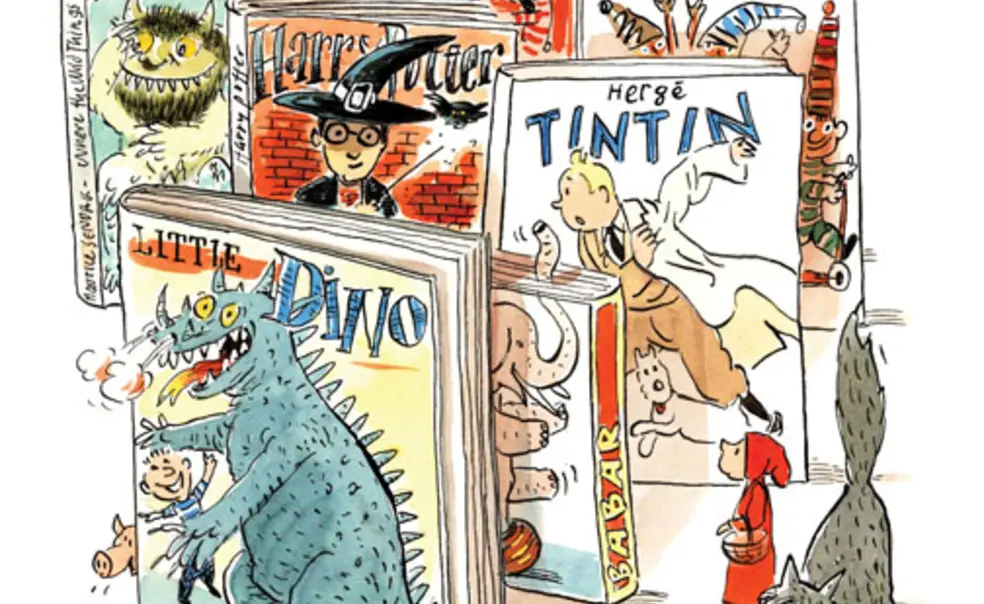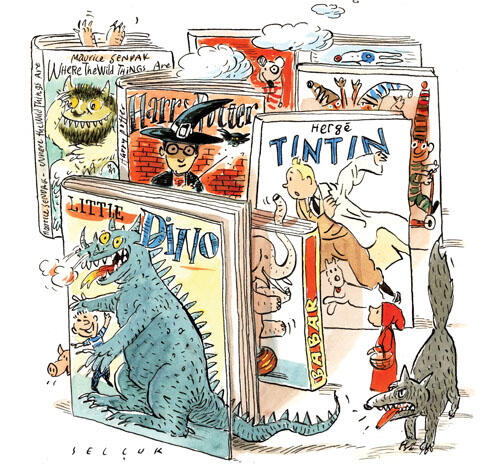Spring term's big draw: reading kids' literature
While some students are laboring over heavy tomes of Milton or Joyce in the spring term, others are enjoying slimmer, more colorful volumes — like Hergé’sAdventures of Tintin and Maurice Sendak’sWhere the Wild Things Are.
ENG 335: “Children’s Literature” is not remarkable as much for its lively syllabus, though, as for its immense popularity. The English department put a cap on course enrollment at 450 students — the capacity of the University’s largest lecture hall, McCosh 50 — after the class filled up quickly with seniors and juniors, leaving room for only a few sophomores.
Professor William Gleason, a specialist in 19th- and 20th-century American popular literature who is teaching the course for the first time, said that he was happily surprised by the popularity of the course. “We had no plans to cap it,” he said, “until we realized that there was no classroom on campus that could hold everyone.” Learning that he is teaching the University’s most popular course this semester has made him “a little overwhelmed and intimidated but very excited,” Gleason said. The last time the course was taught, in fall 2006 by now-retired professor Ulrich Knoepflmacher *61, it attracted 218 students.
Gleason speculated that the fact that the course hasn’t been taught in three years might have contributed to its current size. Christina Powell ’10, a psychology major, said that she wanted to take the course as a freshman but couldn’t fit it in her schedule. “When I saw it again this year,” she said, “I was thrilled.” Powell said she particularly was looking forward to thinking about children’s books “from both an adult point of view and a child’s point of view.”
Catharine Bellinger ’12 said she had wanted to take the course even before she arrived at Princeton, based on recommendations from her father, John Bellinger ’82, and godmother, Katherine Britton ’82. Bellinger said that during spring-term enrollment in December, many students were posting on Facebook that the course was filling up quickly.
Groups of students signed up to take the course together. Religion major Meaghan Byrne ’10 said that many of her friends selected the class because they wanted a course that would be “fun, memorable, and not too difficult.”
English major Sarah Kabourek ’10, who signed up for ENG 335 because she wrote a junior paper under Gleason and enjoyed the experience, said that she thinks a lot of students who signed up for the class might drop it when they realize that the course will involve more than reading picture books.
Gleason explained that the course will be “not that different methodologically from any other English class,” requiring students to write two papers and complete a take-home final exam. The reading load is about 200 to 250 pages a week — relatively standard for an English course — from a syllabus covering works from the past 200 years, including Louisa May Alcott’s Little Women, Norton Juster’s The Phantom Tollbooth, and J.K. Rowling’s Harry Potter and the Prisoner of Azkaban.
The focus of the course is taken increasingly seriously within the academic community, Gleason said: “Ironically, the field of children’s literature has really matured.”
He added that the course’s popularity is understandable because “looking at children’s literature in an academic setting forces you to cross the bridge between adulthood and childhood, and that’s exactly the bridge that the students are going over.”
Bellinger had a simpler explanation: “Sometimes,” she said, “we just want to read Harry Potter.”













No responses yet